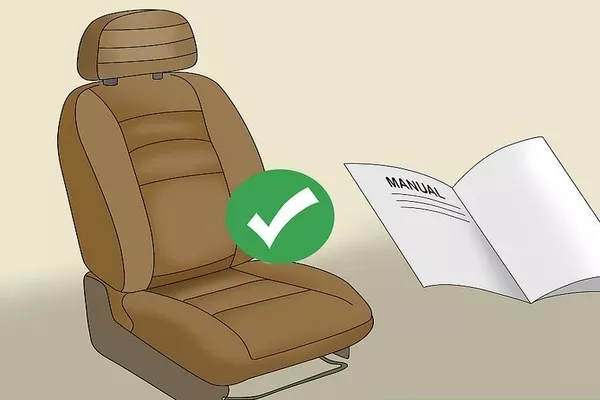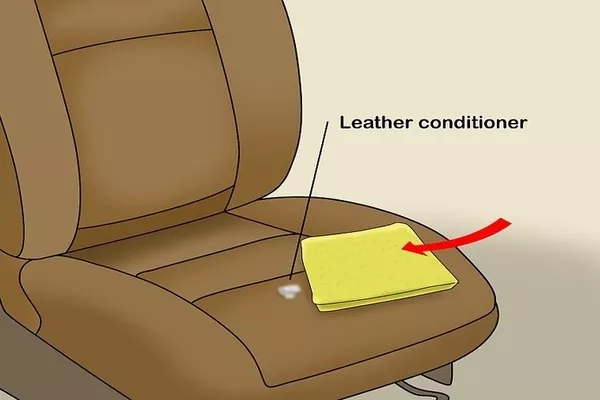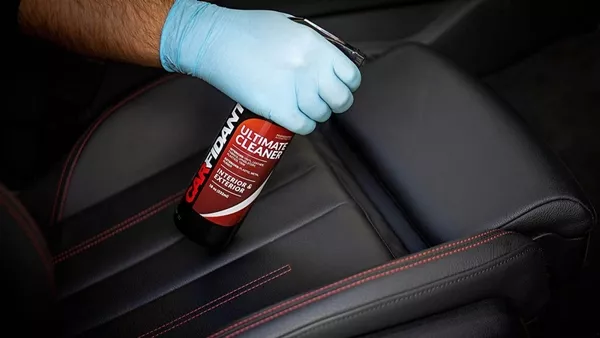The upholstery is what catches most people’s attention when they step into a car. Car seats, especially leather ones, contribute to the overall style of the interior. They’re also largely responsible for making the ride as comfortable as possible.
With the form and function that seats serve in the cabin, proper maintenance is a must to help them last the life of the car, with leather seats needing extra attention and care. What exactly should be done (or avoided) when cleaning leather car seats? Find out in this article from Philkotse.com.
1. Different types of leather
There are four main types of leather commonly used in car seats, namely corrected grain leather, full-grain, aniline, and semi-aniline. Familiarizing yourself with these different types lets you know the right thing to do when cleaning and maintaining your seats.
Aniline leather
Considered as the finest leather available, this type has been used quite extensively in the past century. The last two decades, however, have seen a drastic decrease in its use.
Aniline leather is rich in color and very soft to the touch. It also requires great care because it is the least resistant to wear, especially if there is no protective coating.
Semi-aniline leather
This type has been colored with aniline dyes. After the coloring process, a protective coat is applied to make this leather more resistant to damage. It is considered “finished” leather. In general, this type of leather is found in higher-end cars.

Familiarizing yourself with these different types lets you know the right thing to do when cleaning and maintaining your seats
Full-grain leather
This type is commonly used in luxury cars. Its texture is not corrected, meaning it will retain the hide's original markings. A more protective pigmentation and the coating are applied in full-grain leather. It is more durable compared to aniline leathers.
Corrected grain leather
Of all the leather types, the corrected grain is the least natural, but the most resistant to wear, making it ideal for families. Although it’s still nice to touch, there’s a significant difference between corrected grain and aniline leather. It is commonly found in lower to medium-end cars.
>>> Read more: Must-know steps on how to clean different types of car seats.
2. What you should do to your leather car seats
Consult the owner’s manual
Before you do anything to your leather seats, make sure you read through the owner’s manual to check if there are special guidelines for the car’s leather upholstery.

Read through the owner’s manual to check if there are special guidelines for the car’s leather upholstery
Choose your cleaner wisely
There is a wide range of leather cleaners available in the market. When buying a commercial leather cleaner and conditioner, select those that use natural and non-toxic ingredients.
Vacuum thoroughly
You’ll need to vacuum your leather seats before applying the cleaner, to remove sand, dirt or lose grime that might scratch your leather seats during the cleaning process.

You need to vacuum your leather seats before thorough cleaning
>>> Grasp your attention:
- Do I really need to upgrade to leather seat covers? [Newbie Guide]
- How to choose car seat cover in the Philippines: Essential Tips for Pinoy drivers.
Use microfiber cloth
When cleaning leather seats, microfiber towels are ideal since their super-absorbent properties help them pick up dirt that can cause scratches on the leather surface.
Follow the instructions on the cleaner
Be sure to read and follow the instructions on the packaging, to increase your chances of getting the best possible results.
Do a spot test
To check your selected cleaner is right for your leather seats, you can do a spot test. Pick out a small area that’s not readily visible, in case the result you get is less than ideal.
Go slowly and work in small sections
As the adage goes, haste makes waste. Proceed slowly while working in small sections at a time. Being too aggressive might cause you to damage the leather surface and do more harm than good.
Use vinegar and water as a cleaning solution
If you can’t find a suitable leather cleaner, or if you’re on a limited budget, you devise your own cleaning solution using water and vinegar. Just mix two parts vinegar to one part water.
Promptly clean spills
Accidents sometimes happen, resulting in spills on your leather seats. Make sure you have a clean cloth on hand to immediately clean it up, to avoid or at least reduce the chance of stains.

A leather car seat should also be conditioned for 2 or 3 times a year
Clean regularly and condition occasionally
Your leather seats should be cleaned regularly, at least once a month. They should also be conditioned two or three times a year.
>>> Also check: How Sweat Can Affect Leather Seats and How to Deal with Them.
3. What you should not do
Directly spray anything on the seats
Don’t spray, pour or otherwise apply any liquid directly on the seat surface, especially in the case of perforated leather. Use the microfiber towel, moistening it with the cleaning solution before rubbing it onto the leather surface.

Avoid spraying anything on the seats directly, especially in perforated leather
Use conditioners that have wax or petroleum
Leather conditioners that contain wax or petroleum ingredients can dry and damage the leather finish with repeated use.
Let the cleaning solution dry on the seat
Never leave any amount of cleaning solution on the leather surface for long.
Rub-down the moisture with the microfiber cloth until it has been completely absorbed. Leaving the solution to dry on the seats can cause discoloration and leave residue behind.

Don’t ever let the solution dry on the seats
>>> Worth reading: Choosing Car Seat Material: Which kind of material is the best?
No guesswork
If you’re not the original car owner or you don’t know the type of leather your seats use, there are better ways to find out than just guessing. Different types of leather need different types of cleaning and conditioning.
When in doubt, ask the previous owner or dealer about the kind of leather on your upholstery.
Use hard bristles
If you want a deeper clean, avoid using a brush with hard bristles. Opt instead for a soft-bristled brush, or one that is specifically made to clean leather.
Spend less on cleaning solutions and material
When it comes to cleaning solutions, it’s not a good idea to pinch pennies. Cheaper products might adversely affect your leather.
Go for high-quality natural cleaners that will keep the leather seats in good condition. They may be a bit pricier, but they pay for themselves in the long run.
Soak the cloth too much
Avoid soaking the cleaning cloth with the solution, since excess liquid damages the leather seats. On perforated leather especially, it will grow mold and mildew.
>>> Get more helpful car tips and advice on Philkotse.com.
Recent posts
- How to remove gum from car seat: 6 steps to follow Aug 17, 2022
- How to Clean Pet Urine Off Car Seat Nov 30, 2022
- Steps to fix cigarette burns on car seats Aug 16, 2022
- 5 things you need to know about baby car seats Aug 16, 2022
- Making Peace with Your Car Seats Feb 21, 2019












